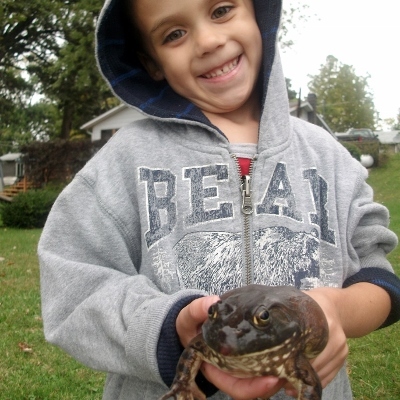 As kids reach their preschool years, they have the teeth and ability required to chew up their food into smaller pieces before swallowing. Kids also develop stronger tongue muscles for increased dexterity needed to push food into range of their teeth. As a result, you can start introducing foods that were previously off limits for being a serious choking hazard. Despite their improved physical abilities, however, young kids still require their parents’ assistance and guidance to safely eat these new foods. Here are a few ways you can help.
As kids reach their preschool years, they have the teeth and ability required to chew up their food into smaller pieces before swallowing. Kids also develop stronger tongue muscles for increased dexterity needed to push food into range of their teeth. As a result, you can start introducing foods that were previously off limits for being a serious choking hazard. Despite their improved physical abilities, however, young kids still require their parents’ assistance and guidance to safely eat these new foods. Here are a few ways you can help.
Spread Sticky Foods Thin
When serving up sticky foods, it is important to only offer thin portions to avoid overloading the tongue and throat. If kids take too big of a bite, sticky foods, like peanut butter, could cause an obstruction. You can help prevent this issue by always spreading nut butter and other sticky spreads to less than an eighth inch thick. Encourage your child to take small bites and chew thoroughly before swallowing.
Cut Up Round Foods
Round foods, like hot dogs and grapes, are the exact same size and shape of your child’s throat. Since kids do not have their mealtime breathing patterns mastered, an ill-timed breath could send the round item sailing into the back of the throat. The Heimlich maneuver may fail to dislodge the food since the soft texture simply changes shape with each thrust. You can help prevent this issue by cutting all round foods in half before serving. If your child likes to eat whole hot dogs in a bun, simply slice the hot dog in half, lengthwise, and prepare the bun like normal.
Sit While Eating
Preschool aged children do not have the patience to sit through the entire mealtime. Many kids would rather run, jump and play in between bites. Unfortunately, quick movements can increase the chance of choking while eating. Establish a fifteen-minute sit down mealtime rule to help your kids learn to eat safely. At the end of that time span, allow your kids to choose to get up and run around. After working out the wiggles, ask your kids if they would like to return to the table to finish their meal or have it put up for later. If they return, repeat a few five minute sitting intervals until they are done eating.
Prevent Mouth Stuffing
At each meal, your family can talk about the proper amount of food to place in the mouth at one time. Young kids want to rush through the meal to return to their games, books or shows. Setting a timer does not help this problem, as kids figure they must finish to return to the fun. You will need to actively observe your child and verbally correct mouth stuffing as it occurs. You can make this topic more fun by taking tiny bites and acting out food tasting sessions together, like judges on a chef show.
With help, your kids will learn how to safely approach new foods and master eating in a safe manner.










